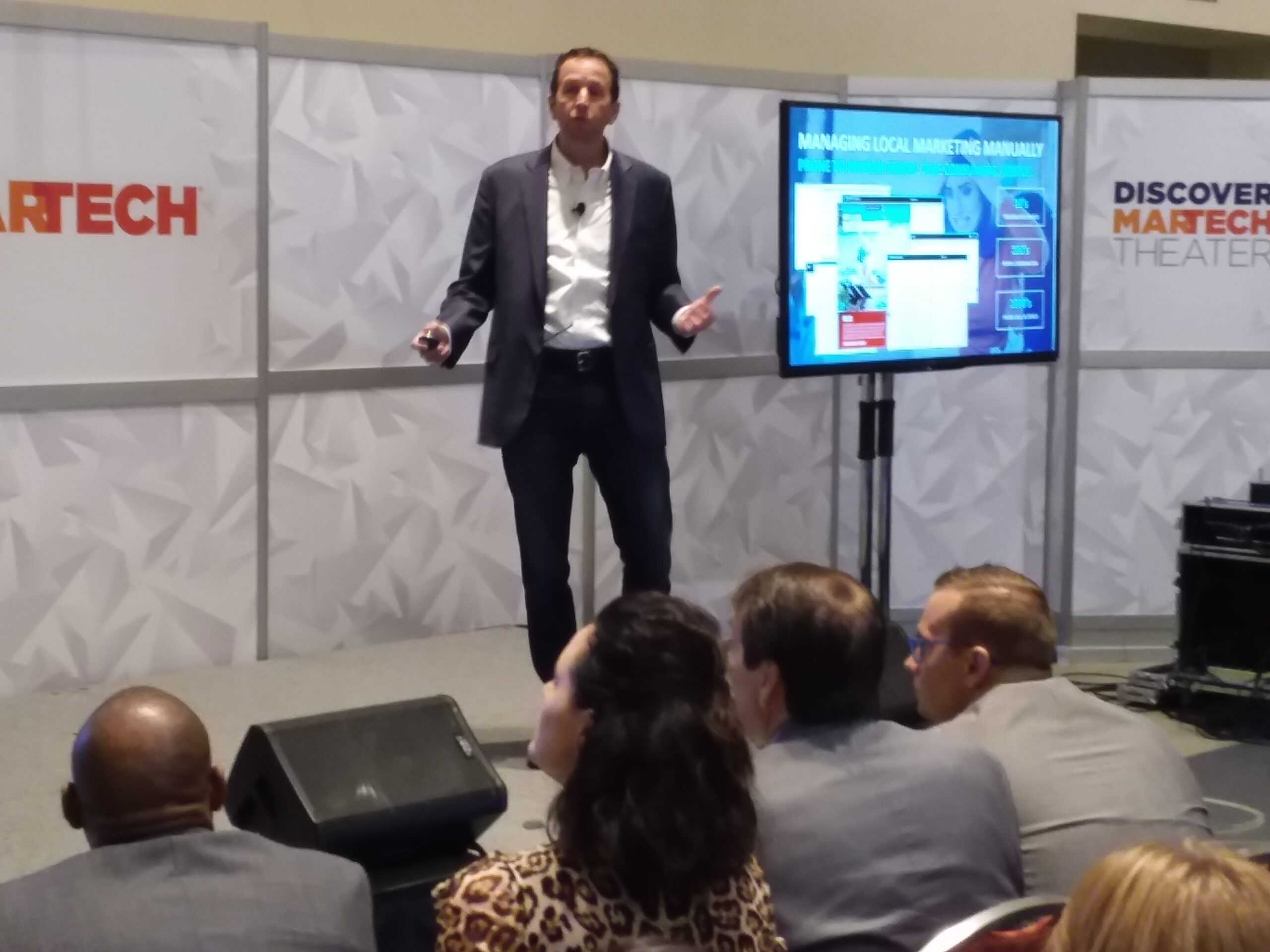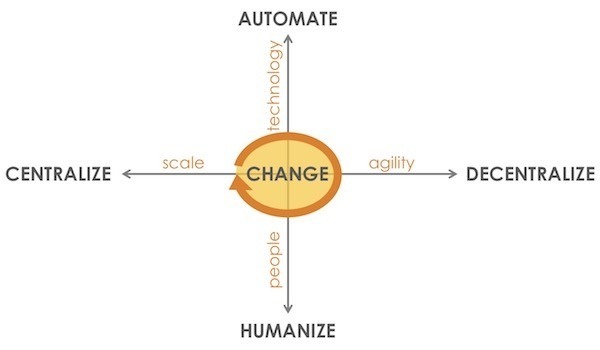MarTech East kicked off yesterday at Boston’s Hynes Convention Center and concludes today. Conference speakers embraced the fundamental themes of how technology and data can be used both to drive operational efficiency, but more importantly to help humanize brands and engage consumers. (Speaker presentations can be viewed here.)
Program chair and chiefmartec.com blogger Scott Brinker kicked off the event with his keynote speech on, “The New, New Rules of Marketing.” Brinker began by citing Thomas Edison’s quote, “Genius is 1 percent inspiration and 99 percent perspiration.” Leveraging the conference’s main theme of “marketing, technology and management,” Brinker said that in marketing, it’s “1 percent inspiration and 99 percent operations.”
The takeaway point is that the goal of these operations for brands is they must help them adapt to consumer expectations. As Aetna’s Shiva Mirhosseini put it, “Customer expectations have changed, our model has not…we must change our metrics from marketing assets delivered to customer engagements.” This certainly implies a new, more accountable value proposition that brands will be expecting from their media partners.
Netsertive’s Brendan Morrissey pictured above provided an example of this in his talk as he distinguished between “local” and “localized” marketing campaigns. As he shared at BIA’s Local Impact conference in Washington, DC last spring, and in our first Local as a Service report, Morrissey highlighted how brands can use technology to localize campaigns by designing and operating marketing executions that are contextually relevant to local conditions and independently driven by data and business rules to feel local to consumers. Activating local marketing with the same campaign in all retail locations is a different and lower quality consumer experience than a localized marketing campaign that contextualizes creative messages with things like regional terms (“soda” versus “pop”), local maps, points of interest, weather conditions, etc. Buying local media doesn’t localize a campaign unless the creative execution, audience targeting, and consumer engagement is relevant to the localized conditions.
Speaking with Morrissey at the event, we wondered what martech’s impact might be on demand for local media ad inventory as brand CMOs get smarter about local versus localized campaign executions that show higher consumer engagement and ROI. “We definitely see increased demand for local media inventory from multi-location brands as tech brings both operational efficiency and more relevant content at scale to local consumers,” Morrissey concluded.
Essentially, CMOs are getting smarter about using tech and data to understand and engage consumers in an integrated, more seamless fashion. Local publishers, with trusted brands and premium content offer ad inventory that is valuable to national and multi-location brands. As this ad market begins to enjoy decreasing friction because of marketing and as brands continue to integrate operations to achieve greater efficiency and impact, this will increase “smart” demand for local media ad inventory. Smart because brands will have a newfound sense of the value local media bring in their attempts to humanize and localize their personalities with consumers.
As depicted in the graphic below, the five forces that are foundational in where martech is headed include: Automate versus Humanize and Centralize versus Decentralize in a market facing fast-paced Change. Tech automation can help brands achieve scale and agility to build solid equity with consumers. That’s the theory. As speakers shared their experiences, clearly this is a meaningful but still nascent movement.
Martech increasingly is embracing Artificial Intelligence and Machine Learning along with Customer Data Platforms, all designed to develop actionable insights for how brands can more effectively and efficiently engage consumers. Neeti Mehta, SVP Brand & Culture Architect at Automation Anywhere, shared her insights on how AI, Machine Learning, Business Process Logic(BPL), and Robotic Process Automation (RPA) will drive changes in how brand marketers build, activate, and optimize marketing campaigns. She cited examples of BPL and RPA already are used by brand marketers to drive ad mix optimization and spend.
These are the kinds of things CMOs and their brand marketing teams talk about. They have large tech and data budgets and are figuring out how to get the five forces of marketing under control to more fully engage their consumers. Let’s hope the media side is building up similar levels of sophisticated to be full participants in this dialog and fast evolving marketplace.
To keep up with these developments, check out our Local as a Service (LaaS) reports and join us on November 8th at BIA Local Impact-Dallas for another LaaS workshop.



